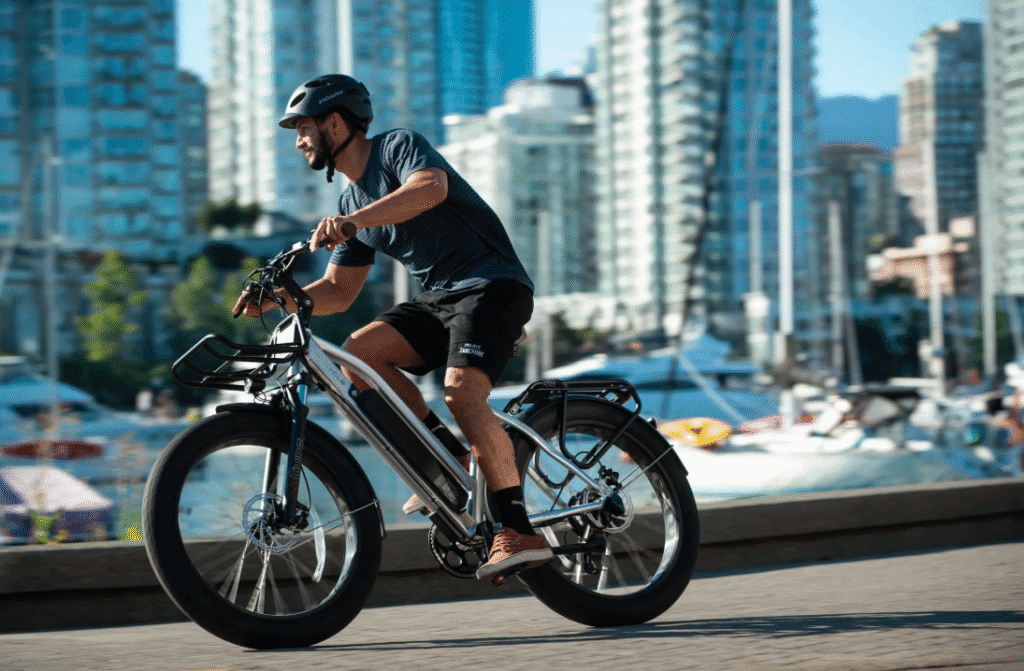Affordable Pathways to Ownership
Electric bikes, or e-bikes, are transforming urban mobility, offering an eco-friendly, efficient, and fun alternative to traditional transportation. As their popularity surges in 2025, the cost of purchasing an electric bike can be a barrier for many. Fortunately, a variety of electric bike financing options are available to make ownership more accessible. This article explores the diverse financing avenues for electric bikes in 2025, including government incentives, retailer financing, and other creative solutions, ensuring you can ride without breaking the bank.
Why Electric Bikes Are Worth Financing
Electric bikes combine the benefits of cycling with motor-assisted propulsion, making them ideal for commuting, exercise, and reducing carbon footprints. With advancements in battery technology and design, e-bikes are more powerful and versatile than ever. However, high-quality models can range from $2,000 to $8,000, making electric bike financing options a critical consideration for budget-conscious buyers. Financing allows you to spread the cost over time, making it easier to invest in a sustainable transport solution.
Environmental and Financial Benefits
E-bikes are a low-carbon alternative to cars, reducing greenhouse gas emissions and fuel costs. According to Project Drawdown, increased e-bike adoption could significantly lower urban transport emissions by 2050. Additionally, e-bikes cost pennies to charge, offering long-term savings compared to car maintenance or public transit fares. Financing an e-bike can thus be a smart investment in both environmental and personal financial health.

Growing Popularity in 2025
The global e-bike market is booming, with countries like China leading adoption and North America catching up. In 2025, e-bikes are expected to account for a growing share of urban mobility, driven by rising fuel costs and environmental awareness. This surge in demand has prompted governments and retailers to offer tailored electric bike financing options to encourage adoption.
Government Incentives for Electric Bike Financing
Governments worldwide are recognizing the potential of e-bikes to reduce emissions and promote active travel. In 2025, several programs provide financial incentives that make electric bike financing options more affordable.
United States: Federal and State Incentives
In the U.S., proposed legislation like the E-BIKE Act (H.R.1685) could introduce a federal tax credit of up to 30% of an e-bike’s cost, capped at $5,000 per bike. This incentive aims to make e-bikes more accessible by reducing the upfront cost. While the bill’s status is pending as of 2025, its potential passage could significantly enhance electric bike financing options for American consumers. For more details on the E-BIKE Act, visit Congress.gov.
At the state level, California’s E-Bike Incentive Project offers grants to low-income residents, covering a portion of the purchase price. For example, the program provides vouchers that reduce the cost of e-bikes, which can be combined with other financing plans. These incentives are particularly valuable for those who might otherwise find e-bikes unaffordable.
International Programs: India and Europe
In India, the PM E-Drive Scheme provides subsidies for electric two-wheelers, including e-bikes, with up to ₹5,000 per kWh (capped at ₹10,000 per vehicle) in 2025. This reduces the initial cost, making electric bike financing options more attractive. Several Indian states, such as Gujarat and Tamil Nadu, also offer additional subsidies and road tax exemptions.
In Europe, countries like the UK are investing in active travel through initiatives like Active Travel England, which supports e-bike adoption. Some European nations provide direct purchase incentives or low-interest loans, further expanding electric bike financing options for residents.
Retailer Financing Programs
Many e-bike retailers in 2025 offer in-house financing plans to make purchases more manageable. These programs often feature flexible terms, low or 0% interest rates, and minimal down payments.
V12 Finance and Similar Platforms
Retailers like e-bikeshop.co.uk partner with financing providers such as V12 Finance to offer 0% interest plans. Customers can spread the cost of an e-bike over 12 to 36 months, with flexible deposit options. For example, a $3,000 e-bike could be financed with monthly payments as low as $83 over 36 months, making it an appealing electric bike financing option for those on a tight budget.
Brand-Specific Financing
Major e-bike brands like Velotric and Rad Power Bikes also offer financing through third-party providers. These plans typically require a credit check but allow buyers to pay in installments, often with promotional periods of 0% APR. Some brands partner with platforms like Klarna or Affirm, which provide “buy now, pay later” options, further diversifying electric bike financing options.
Example: Rad Power Bikes
Rad Power Bikes offers financing through Affirm, with terms ranging from 6 to 36 months. For a $2,500 e-bike, a buyer might pay $70 per month at 0% APR for 36 months, assuming a good credit score. This approach makes high-quality e-bikes accessible without requiring a large upfront payment.
Bank and Credit Union Loans
Traditional financial institutions also provide electric bike financing options through personal loans or specialized vehicle loans. These options are ideal for buyers who prefer not to rely on retailer-specific plans.
Personal Loans
Banks and credit unions offer personal loans that can be used to purchase e-bikes. In 2025, these loans typically have interest rates ranging from 5% to 15%, depending on creditworthiness. For example, a $4,000 loan with a 7% interest rate over 24 months would result in monthly payments of approximately $180. Credit unions often offer lower rates than banks, making them a competitive choice for e-bike financing.
Secured vs. Unsecured Loans
Secured loans, which use the e-bike as collateral, may offer lower interest rates but carry the risk of repossession if payments are missed. Unsecured loans, while easier to obtain, often have higher rates. Comparing offers from multiple lenders is key to finding the best electric bike financing option.
Alternative Financing Solutions
Beyond government incentives and traditional loans, several creative financing solutions are emerging in 2025 to make e-bikes more affordable.
E-Bike Subscription Models
Some companies are introducing subscription-based e-bike programs, where users pay a monthly fee for access to an e-bike, maintenance, and insurance. These services, popular in urban areas, eliminate the need for outright purchase, offering a unique electric bike financing option. For example, a subscription might cost $50–$100 per month, covering all associated costs.
Employer-Sponsored Programs
In 2025, some employers are partnering with e-bike retailers to offer financing or subsidies as part of employee wellness programs. These initiatives may include discounted purchase prices or payroll deduction plans, making e-bikes more accessible for commuters.
Peer-to-Peer Lending
Platforms like LendingClub allow individuals to borrow from private investors, often at competitive rates. These peer-to-peer loans can be used for e-bike purchases, providing another avenue for electric bike financing options.
Factors to Consider When Choosing a Financing Option
Selecting the right financing plan requires careful consideration of several factors to ensure affordability and suitability.
Interest Rates and Terms
Compare interest rates and repayment terms across different electric bike financing options. Plans with 0% APR, like those offered by retailers, are ideal but may require excellent credit. Longer terms reduce monthly payments but may increase total interest paid.
Eligibility Requirements
Some financing programs, such as government incentives or retailer plans, have specific eligibility criteria, such as income limits or credit score requirements. For example, California’s E-Bike Incentive Project targets low-income residents, while bank loans may require a minimum credit score of 650.
Total Cost of Ownership
Consider the total cost of owning an e-bike, including maintenance, accessories, and insurance. Financing plans that cover these additional costs, like subscription models, can be more cost-effective in the long run.
Tips for Securing the Best Financing Deal
To maximize the benefits of electric bike financing options, follow these practical tips:
-
Shop Around: Compare financing offers from retailers, banks, and government programs. Online tools and calculators can help estimate monthly payments and total costs.
-
Check for Incentives: Stay informed about local and national incentives, such as tax credits or grants, which can reduce the cost of your e-bike.
-
Improve Your Credit Score: A higher credit score can unlock better interest rates and terms. Pay down existing debt and check your credit report for errors before applying.
-
Read the Fine Print: Understand the terms of any financing agreement, including penalties for late payments or early repayment. Some plans may have hidden fees that increase the overall cost.
The Future of E-Bike Financing in 2025
As e-bike adoption grows, financing options are likely to expand. Governments are expected to introduce more incentives, while retailers and financial institutions innovate with flexible plans. Emerging technologies, such as improved battery life and lower production costs, may also reduce e-bike prices, making financing even more attractive.
Legislative Developments
Proposed laws, like California’s Assembly Bill No. 2234, aim to enhance e-bike safety and accessibility, potentially including new financing incentives. Staying updated on such legislation can help you take advantage of new electric bike financing options.
Technological Advancements
Advancements in e-bike technology, such as lighter batteries and more efficient motors, could lower prices, reducing the need for extensive financing. However, premium models will likely remain costly, keeping financing relevant.
Conclusion
Electric bike financing options in 2025 offer diverse pathways to ownership, from government incentives to retailer plans and alternative solutions like subscriptions. By exploring these options, comparing terms, and leveraging incentives, you can find an affordable way to join the e-bike revolution. Whether you’re commuting, exercising, or reducing your carbon footprint, financing makes e-bikes accessible to a wider audience.
For the latest updates on incentives, visit local government transportation departments and programs like Project Drawdown and LendingClub for alternative lending options.



